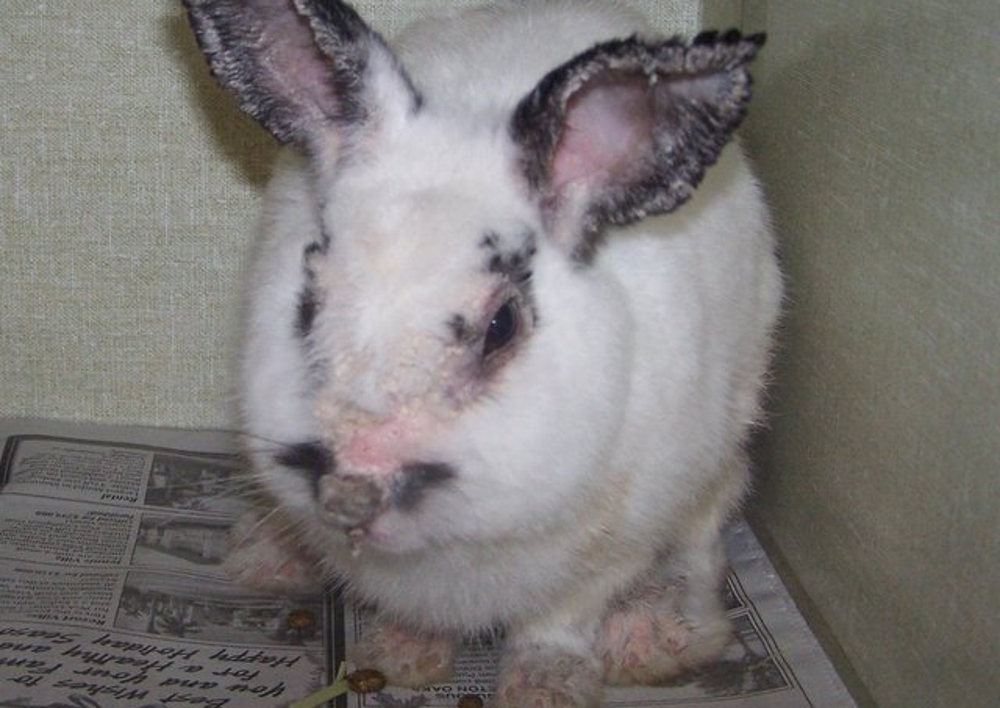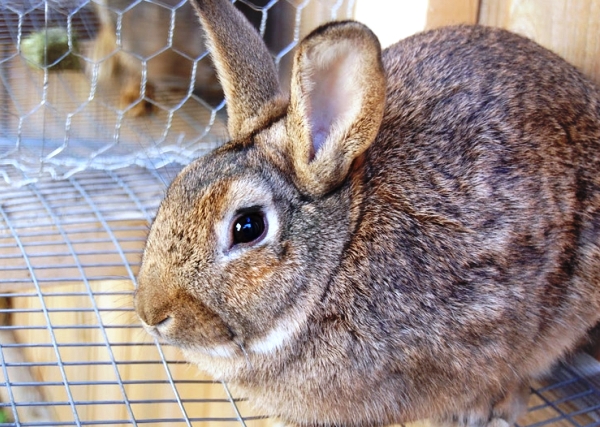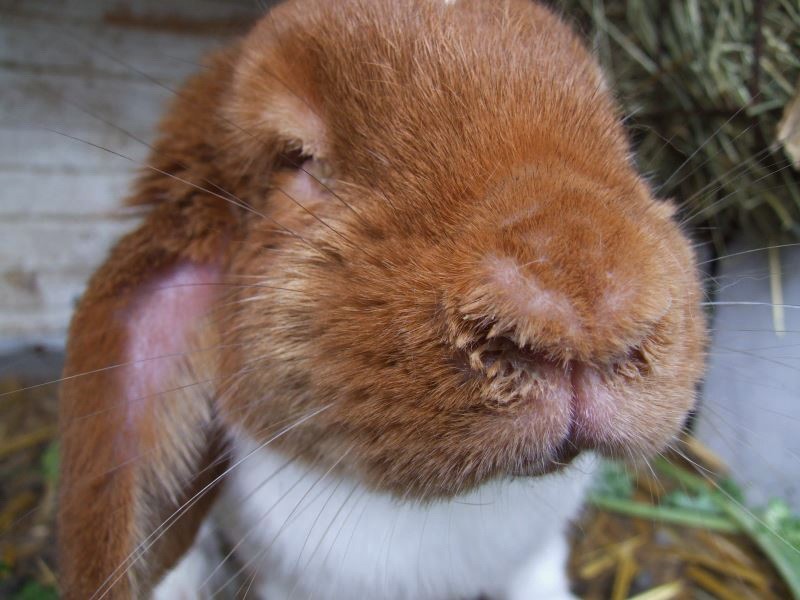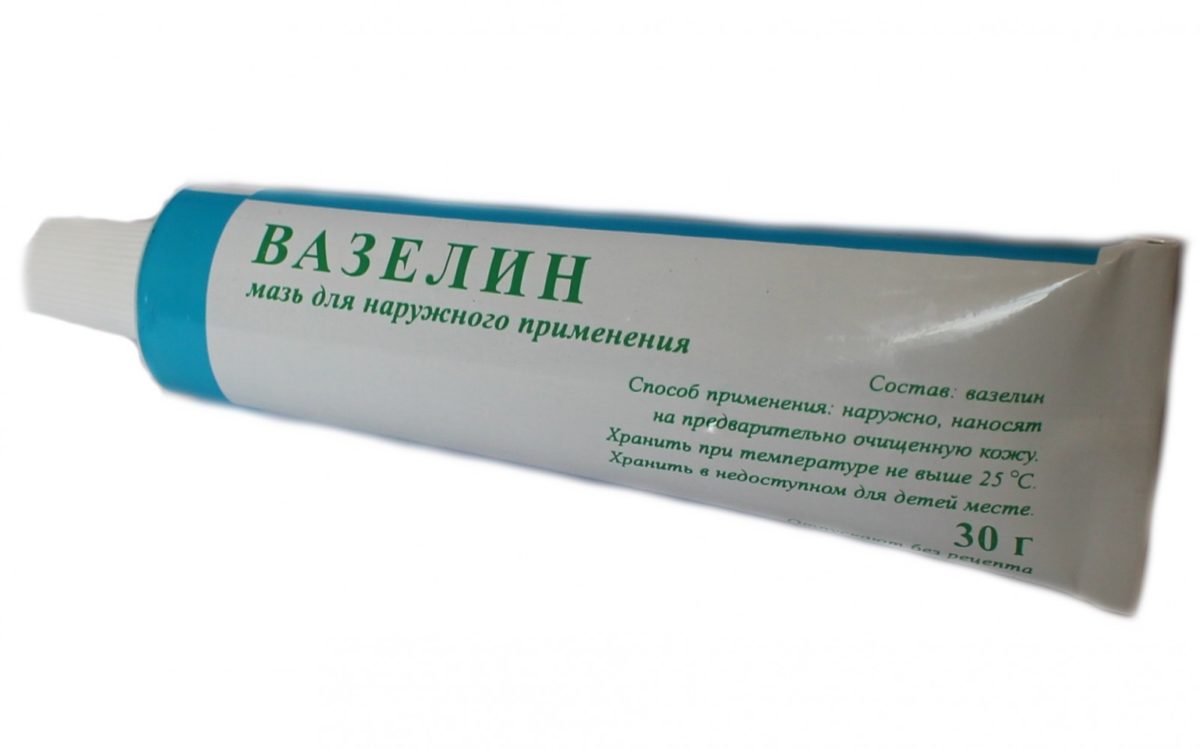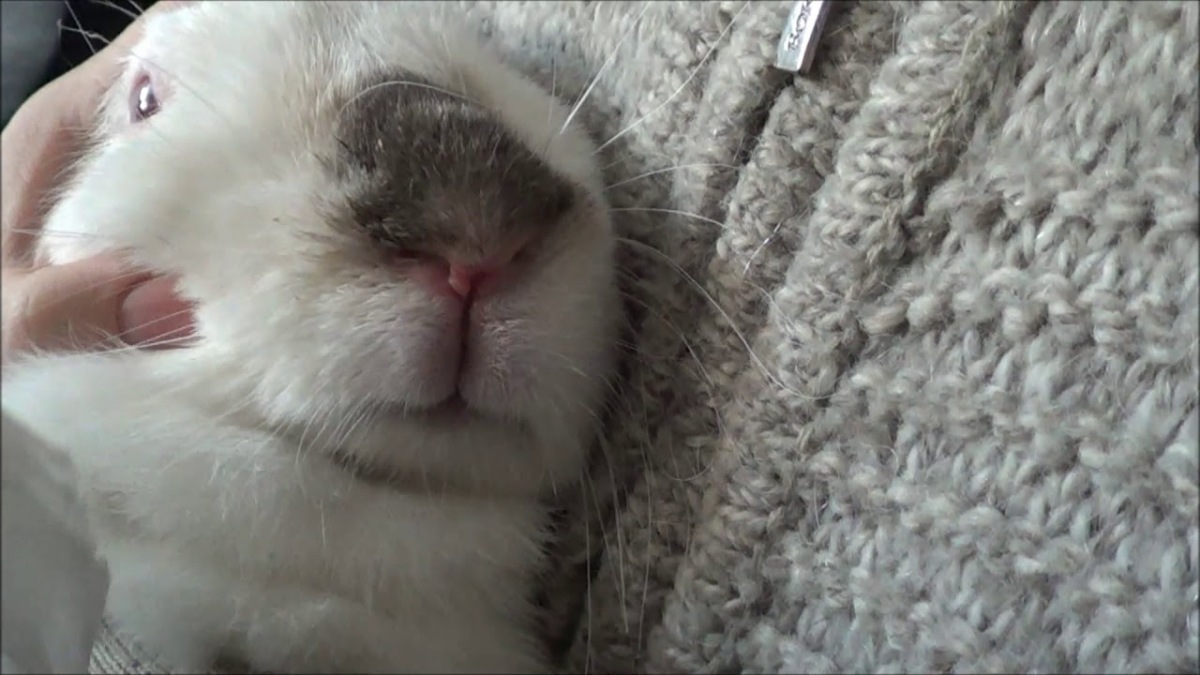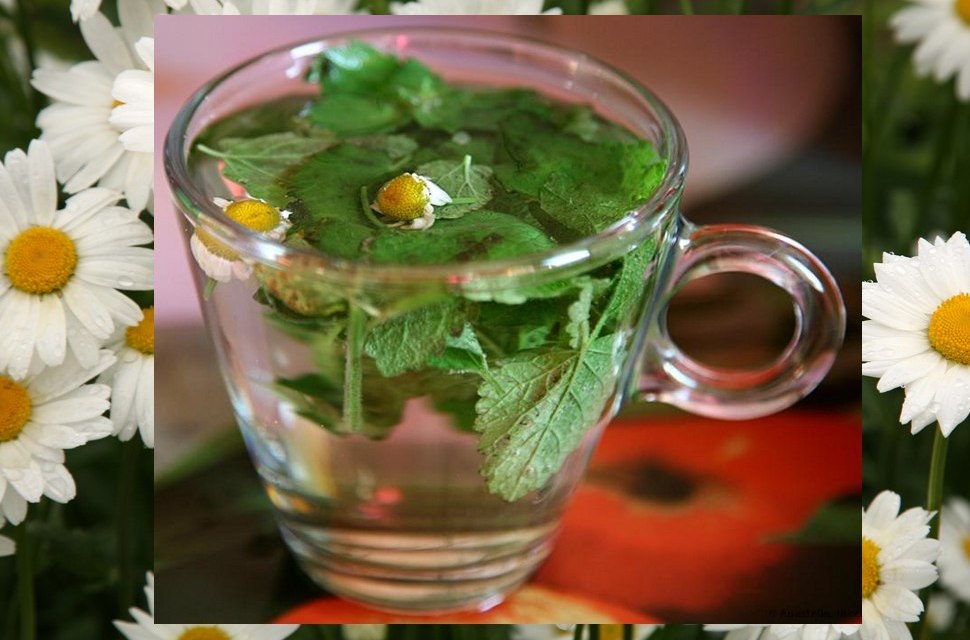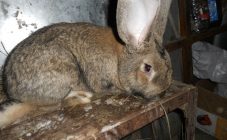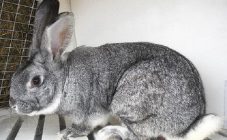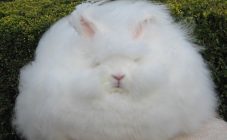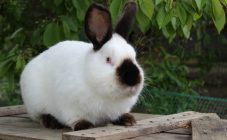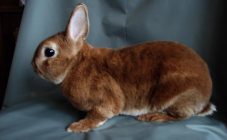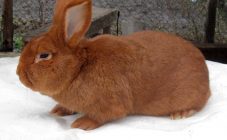Content:
Rabbit breeders note that they need careful care, as these animals are not resistant to diseases. Sometimes a rabbit may show symptoms of the disease in a matter of hours: it becomes lethargic and begins to sneeze. Why a rabbit sneezes and how to cure a runny nose will be discussed in this article.
Why is the rabbit sneezing?
Sneezing and snot in a rabbit may appear for the following reasons:
- hypothermia;
- dirt and dust in the cage;
- trauma to the nose;
- infectious diseases;
- cold.
For the correct start of treatment, it is necessary to accurately establish the causes of the appearance of pathology. In such cases, it is recommended to contact a veterinarian who will examine the animal, diagnose and prescribe treatment or medication. If it is not possible to consult a veterinarian, you can try to determine the cause of the disease yourself by a number of signs.
Diseases of a non-infectious nature
If your rabbit starts sneezing, chances are he has a cold. The reasons for the appearance of such symptoms are a rapid change in temperature, drafts or hypothermia. In this case, it will be enough to place the animal in a warm and heated room, where there are no drafts, and a stable temperature is also kept. Non-infectious forms of pathology also include allergies, which can be triggered by various allergens:
- aromatic agents;
- dust;
- hay.
To prevent the occurrence of allergies, it is necessary to remove from the room where the rabbit is, all air fresheners, sprays, deodorants, perfumes and other substances that spread chemical odors. Also, during manifestations of allergies, it is necessary to wipe the animal's nostrils with saline.
Infectious diseases
What if the rabbit sneezes? First of all, in order to avoid contamination of other individuals with a possible infection, it is recommended to transplant the sneezing rabbit into a separate cage. If the disease was caused by an infection, the rabbit will have snot, sneeze and cough, and a number of other symptoms will appear. If the disease is acute, there may be white discharge from the nose and a crust around it.
An infectious disease appears due to the effect of various viruses and bacteria on the animal:
- streptococci;
- pasteurella;
- staphylococcus.
It should be noted that these viruses are also found in healthy animals, but at the same time they do not have a negative effect on them until optimal conditions for their development appear. In some cases, the source of infection may be the person himself, whose disease is caused by the same bacteria.
Symptoms of infectious diseases:
- inflamed nasal mucosa;
- lacrimation;
- cough;
- discharge from the nose;
- dyspnea;
- temperature rise;
- wheezing during breathing;
- oppression.
Some of these symptoms may appear 4-5 days after the onset of the disease. If the disease is not treated, the animal may die.
Runny nose in rabbits: how to treat and care properly
Treatment of rhinitis in rabbits should begin with a visit to the veterinarian. In addition to following the recommendations of a specialist, it is necessary to take care of a sick animal, providing it with adequate nutrition and clean drinking water.
If a rabbit has snot and sneezes, how to treat the animal? While he has not yet been examined by a veterinarian, he must be placed in a room where the animal will not be disturbed by other animals and extraneous sounds - the "patient" must be at rest. In no case should young individuals be torn away from their mother - this will aggravate the situation. Treatment of rhinitis in rabbits of adolescents and "babies" is complicated, as they have weakened immunity and they cannot cope with diseases on their own, and therefore rabbit droppings can die without the support of the mother. If at the same time the rabbit sneezes, you need to start treating her too.
During the treatment period, feed the animals with nutritious food that contains many vitamins. It is recommended to give green herbs, cilantro and parsley, but the main food should be regular, as before. If the snotty rabbit will not eat and he continues to sneeze, then you need to offer him liquid food. This can be ordinary water, in which preparations with vitamins are diluted, or special food sold in veterinary pharmacies. Since during the disease any organism, including the rabbit, becomes dehydrated, it is necessary to replenish the water reserves in the body, therefore, it will be necessary to give the rabbit more fluid.
Drug treatment
If the disease is not infectious, then the animal is transferred to a dry and warm room, and nutrition is also improved to stop sneezing. In this case, the nostrils should be lubricated with petroleum jelly, and the crust around the nose should be removed with a tampon dipped in hydrogen peroxide so that the color of the nose is natural. If the causative agent of the pathology has been identified, then the correct medications must be used.
Bacterial infections in an animal are treated with antibiotics, the course of treatment is 6-7 days. If during this time the rabbit's condition has improved and his symptoms disappeared after taking medication, then you still do not need to stop treatment. In this case, the next dose of antibiotics will give better results.
Can inhalation be done and how to do it?
To get rid of snot from a rabbit, you must use inhalation. The procedure must be carried out throughout the week, so as not to dry out the mucous membrane of the respiratory tract in the animal. For this, both conventional inhalations and cold inhalations are used, devices for which can be purchased at the pharmacy.
Inhalation is carried out using essential oils or herbs in the required proportions. The instruction is on the packaging with the preparations.
It is recommended to try the inhalation on yourself before starting treatment for the rabbit. It is important to observe the sensations. If the procedure causes discomfort, then the solution should be made less concentrated. When carrying out such manipulations, one must remember that the rabbit is susceptible to a negative factor, just like a person.
The inhalation procedure itself is carried out in a cage lined with fresh hay or grass. It is also important that there is a container with water in the cage. The inhaler should be placed outside the cage so that the rabbit cannot reach it.Then the device, together with the cage, is covered with a dense cloth and a small hole is left in it so that there is air access. In this facility, the rabbit will breathe in vapors, which will help him recover from the disease.
Folk remedies for treating a cold rabbit
Traditional methods of treating pathology in these animals involve drinking plenty of fluids and keeping the rabbit in a warm room where there are no drafts, as well as a variety of foods that are rich in vitamins and minerals. But such techniques are used only in the early stages of the disease, when there is no risk to his life. At the same time, the rabbit's nose is constantly wiped with napkins dipped in a solution of potassium permanganate.
What to feed during illness?
When a rabbit is sick, it needs to eat properly. If the animal is accustomed to juicy food, then he needs to increase it in volume. It is important to feed the individual with chamomile and mint; you can also drink mint tea. It is important until the moment of recovery that the rabbit is warm, and you can also put a heating pad in the cage or put a lamp with infrared lighting.
Preventive measures
To prevent the onset of disease in an animal, it is necessary to monitor its living conditions. It is also important to remember that rabbits are the most vulnerable animals to infections, and therefore they should always be kept clean, and there should be fresh water and warm bedding in the cage. Food must be given only of high quality and it is important to monitor the temperature in the room where the animals are. The temperature should not change dramatically. All this will help pets to stay healthy throughout their entire life.
If you accept all these recommendations, fulfill them, and also correctly follow all the instructions of the doctor, then the animal can be cured, in most cases, in a short time. This will help save rabbits from extinction and will allow you to further breed these cute animals for various purposes and needs.
